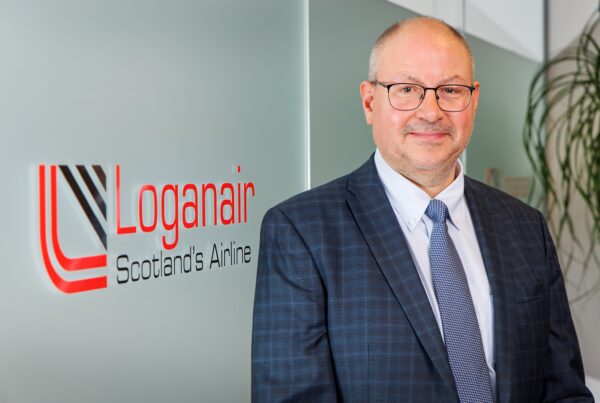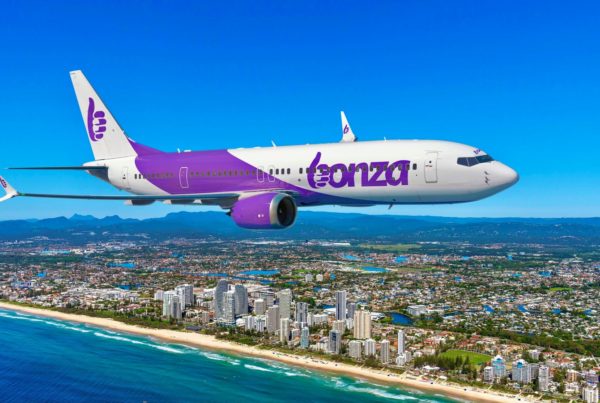At the European Regions Airline Association’s (ERA) Regional Airline Conference in March, LARA sat down with the ERA team to discuss the EU regulatory landscape, what proposed SES2+ changes might mean for regional aviation, and how this dictates the ERA’s own roadmap to decarbonise.
_________
In March, a provisional agreement was reached that sought to improve the environmental performance of air traffic management – and at the end of March, the text of the SES2+ Recast agreement was released.
Regarding the European Single Sky (SES), the European Regions Airline Association (ERA) has been vocal about the fact that it has not gone far enough in the past – referring to the provisional agreement SES2+ as “disappointing”.
ERA’s Director General, Montserrat Barriga, and Head of Operations, Safety and Infrastructure, Nick Rhodes, spoke in greater depth to LARA at the conference on this matter.
“With it [SES2+ Recast], yes, there’s a slight change in the regulation. But the regulation hasn’t changed for so many years. We want a far more network-centric approach,” Rhodes said.
One key part of the provisional agreement includes the establishment of a permanent performance review board (PRB) that will play an advisory role to the European Commission and be funded by the EU budget. It also proposes the introduction of a performance scheme that will include Union-wide targets for en route navigation services, among other criteria, and will be implemented over a maximum of five years.
“The role [of the network manager] is not as strong as we wanted. The role of the PRB is also not what we wanted, either,” Barriga said, with both Rhodes and Barriga noting the problem behind the PRB’s role as one that is only in an advisory capacity.
“If it’s advisory, where are the teeth?” Rhodes added.
Barriga agreed: “The whole principle is to have an open airspace, where all the member states will be working towards the same objective [to maximise airspace efficiency], but that can’t happen if there are no processes in place that allow it.”
“Single European Sky is the most important one that can really deliver benefits for the environment, and you don’t need investments or research and development. Everything is already there.”
SHORT-HAUL FLIGHT BANS
On the banning of short-haul flights – first in France, with three routes from Paris Orly, and now a measure being considered by the Spanish government for flights under 2.5 hours – this action from governments is one that Barriga claimed is “cosmetic, political marketing.”
But is there still a concern that this mindset from governments could spill out across countries in the EU? Somewhat.
“We’re personally not worried about the measures themselves,” she said. “It’s more that it’s another measure to send bad signals about aviation. We’re more worried about the reputational damage to the industry.”
What’s more troubling for Barriga and for the ERA’s members is the revision of the Energy Taxation Directive (ETD) as part of the ‘Fit for 55’ package.
The Commission originally adopted a proposal for its revision in 2021, but what form this revision will take in each country is still being worked on. Currently, regional airlines are taxed on their carbon emissions through the EU ETS via its cap and trade system. But now the EU Commission is looking to align the taxation of energy with the EU’s climate objectives – one proposed element being the elimination of tax exemptions and reductions for fossil fuels.
“It’d essentially tax airlines twice,” Barriga said.
For Barriga, this proposed tax revision represents a barrier for regional airlines. Taxing kerosene would likely duplicate the price airlines pay to buy it, which would translate to regional airlines charging higher prices for their passengers.
“Higher prices mean diversion of demand to other transport, like the train, […] which would mean a reduction of margin for airlines. So, where do we get the money to invest in decarbonising the industry? It’s chicken and egg.” she added.
A GREENER FUTURE
However, despite these challenges and the aforementioned “chicken and egg” scenario, Barriga isn’t deterred about the future of regional aviation and its road to decarbonise.
In so far as other work on sustainable initiatives is concerned, the ERA is working hard on a second edition of its sustainability roadmap Destination 2050.
First published in 2021, the revised document will seek to cover a broader range of new technologies and detail updated regulations and potential challenges faced by regional aviation.
“It’s challenging, but for me what’s most important is that the milestones we’ve put down can actually be achieved and delivered on time, for example hydrogen and electric available before 2030.”
“It’s a super resilient industry, and I’m still optimistic,” Barriga enthused. “I see a lot of collaboration in this space and new ideas about how to bring these environmental improvements into reality.”










